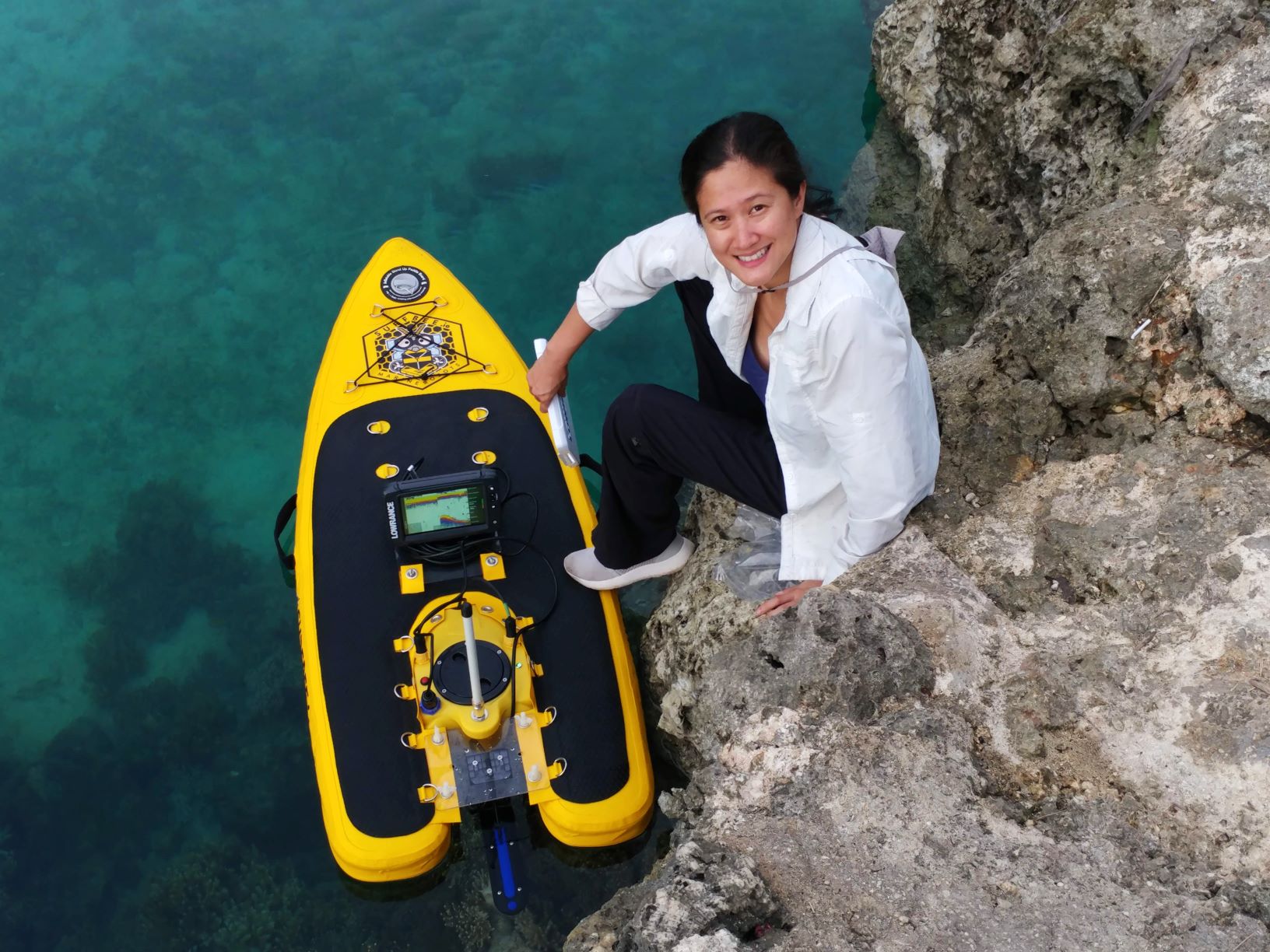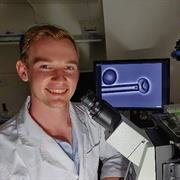
Griffith University researchers will benefit from close to $3 million in Australian Research Council Discovery Early Career Researcher Awards (DECRA) funding, announced by the Federal Government in Round One of the national funding scheme.
Six Griffith researchers from Health, Sciences and Arts, Education and Law will collectively receive $2,647,686 for their projects.
³Ô¹ÏÍøÕ¾ly, more than $86 million in funding for 200 new research projects will be undertaken as part of the ARC DECRA scheme.
Among Griffith’s researchers awarded a DECRA is Dr Andrea Jalandoni, who will further explore the concept of ‘digital archaeology’ in her DECRA project in which she aims to develop a detailed 3D record of Injalak Hill in Arnhem Land, Northern Territory.
Dr Jalandoni’s previous research outputs include in Australia’s rugged landscapes using machine learning.
“Increasing Australia’s research and innovation capacity generates new knowledge and results in the development of new technologies, products and ideas, the creation of jobs, economic growth and an enhanced quality of life in Australia,” said (ARC) Chief Executive Officer, Ms Judi Zielke PSM.
Round One 2024 Griffith DECRAs include:
(Griffith Centre for Social and Cultural Research, AEL) awarded $437,774. Digital archaeology can be used answer fundamental questions about rock art that reflect key cognitive behaviour. This project aims to develop innovative digital archaeology techniques to allow for more data to be collected along with more sophisticated tools for analyses that leads to a more holistic interpretation of rock art. This project expects to generate a state-of-the-art detailed 3D record of Injalak Hill, a methodology that can be tested and replicated worldwide, and new techniques that advance rock art research. The benefits of this project are improving methods to manage cultural heritage, and exploring new ways for Indigenous communities to engage with their cultural heritage using digital products.
(Griffith Health) awarded $463,583. This project aims to create the first biophysically accurate artificial blood cells through fabrication of novel synthetic particles that mimic the complex layers of red blood cells. Using innovative methods from engineering and biology, this project expects to advance biofabrication techniques for biosynthetic microparticles. Expected outcomes from this project include the development of a portable, cost-effective platform technology to immediately advance foundational understanding of cell membrane dynamics, interactions, and integrity. We anticipate that the new bioengineered blood product will provide significant future benefits for blood storage and transfusion, including potentially alleviating global blood shortages
novel synthetic particles that mimic the complex layers of red blood cells. Using innovative methods from engineering and biology, this project expects to advance biofabrication techniques for biosynthetic microparticles. Expected outcomes from this project include the development of a portable, cost-effective platform technology to immediately advance foundational understanding of cell membrane dynamics, interactions, and integrity. We anticipate that the new bioengineered blood product will provide significant future benefits for blood storage and transfusion, including potentially alleviating global blood shortages
(Griffith Centre for Social and Cultural Research, AEL) awarded $452,727. With 20,000 volunteers, almost six million weekly listeners, and 50 years of history, Australia has one of the most well-established community radio sectors in the world. Yet discussions about community radio are limited to debates about media. Community radio stations are diverse and community-engaged organisations, with much more to offer than just what’s on air. This research aims to explore community radio as a model for successful, sustainable, and diverse community organisations. The findings of this project will help other community organisations improve their community connections and engagement, and articulate their value, which will contribute to re-engaging Australians in civic life.
(Queensland Micro- and Nanotechnology Centre, SCI) awarded $446,411. Flexible bioelectronics is an emerging technology for real-time monitoring of vital signals on skin and in the body. Microfluidics is a technology for fluid handling in microscale. This project aims to develop the first platform technology with both flexible bioelectronics and microfluidics for enhanced sensing, thermal management and actuation. The project is expected to establish new fundamental knowledge in sensitivity boosting mechanisms with nano-thin semiconducting films, practical prototypes for long-lasting bioelectronics with integrated microfluidics and their large-scale manufacturing processes. Outcomes include step changes in designing innovative wearable and implantable devices and their massive commercialisation opportunities.
real-time monitoring of vital signals on skin and in the body. Microfluidics is a technology for fluid handling in microscale. This project aims to develop the first platform technology with both flexible bioelectronics and microfluidics for enhanced sensing, thermal management and actuation. The project is expected to establish new fundamental knowledge in sensitivity boosting mechanisms with nano-thin semiconducting films, practical prototypes for long-lasting bioelectronics with integrated microfluidics and their large-scale manufacturing processes. Outcomes include step changes in designing innovative wearable and implantable devices and their massive commercialisation opportunities.
(Law Futures Centre, AEL) awarded $413,974. COVID-19 highlighted the fragmented and poorly defined state of international virus regulation. This project aims to investigate the range of international institutions, structures, laws and stakeholders that regulate virus samples and viral genetic sequence data. The project expects to generate a comprehensive understanding of the international legal landscape and will recommend reforms to create a cohesive approach to international virus regulation. Expected outcomes include a robust legal framework to help stakeholders navigate the complex web of international laws about viruses. Benefits include improved access to viruses and viral genetic sequence data for scientists and the more equitable dissemination of the results of virus R&D.
 (Centre for Catalysis and Clean Energy, SCI) awarded $433,217. Battery failure is mainly derived from uncontrollable lithium dendrite formation. This project aims to investigate fundamental lithium dendrite formation mechanism by utilizing a novel in-situ transmission electron microscopy cell. This project expects to build a new set up which is capable of simultaneous in-situ electrical and nanomechanical measurements of lithium dendrite growth. This project aims to reveal how lithium dendrite growth is affected by different surface modifications on the commercial graphite electrodes. The success of the project will lead to a fundamental understanding of the lithium dendrite formation mechanism, enabling the construction of significantly safer batteries.
(Centre for Catalysis and Clean Energy, SCI) awarded $433,217. Battery failure is mainly derived from uncontrollable lithium dendrite formation. This project aims to investigate fundamental lithium dendrite formation mechanism by utilizing a novel in-situ transmission electron microscopy cell. This project expects to build a new set up which is capable of simultaneous in-situ electrical and nanomechanical measurements of lithium dendrite growth. This project aims to reveal how lithium dendrite growth is affected by different surface modifications on the commercial graphite electrodes. The success of the project will lead to a fundamental understanding of the lithium dendrite formation mechanism, enabling the construction of significantly safer batteries.








